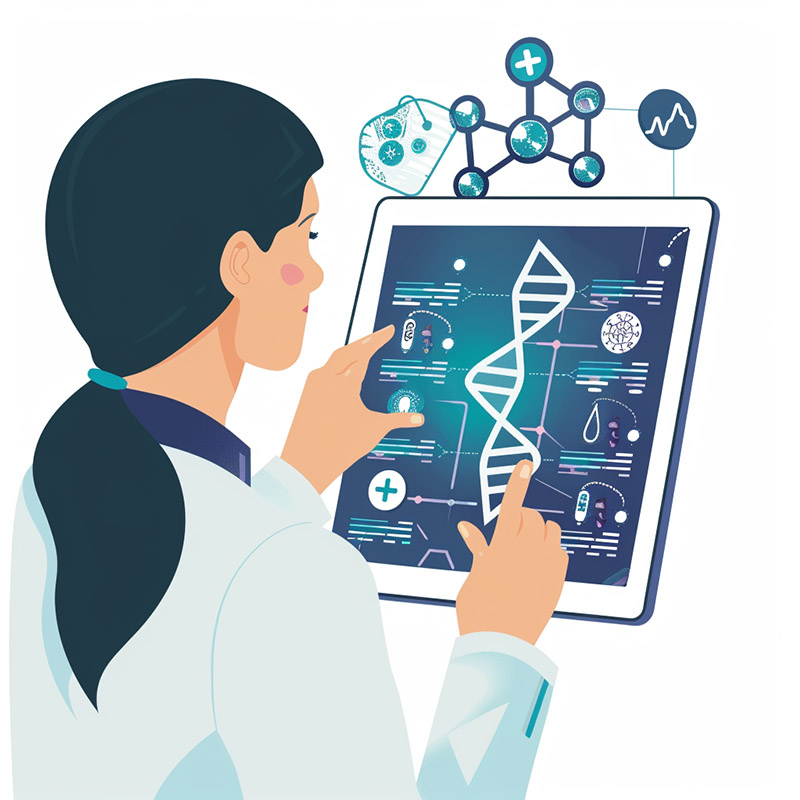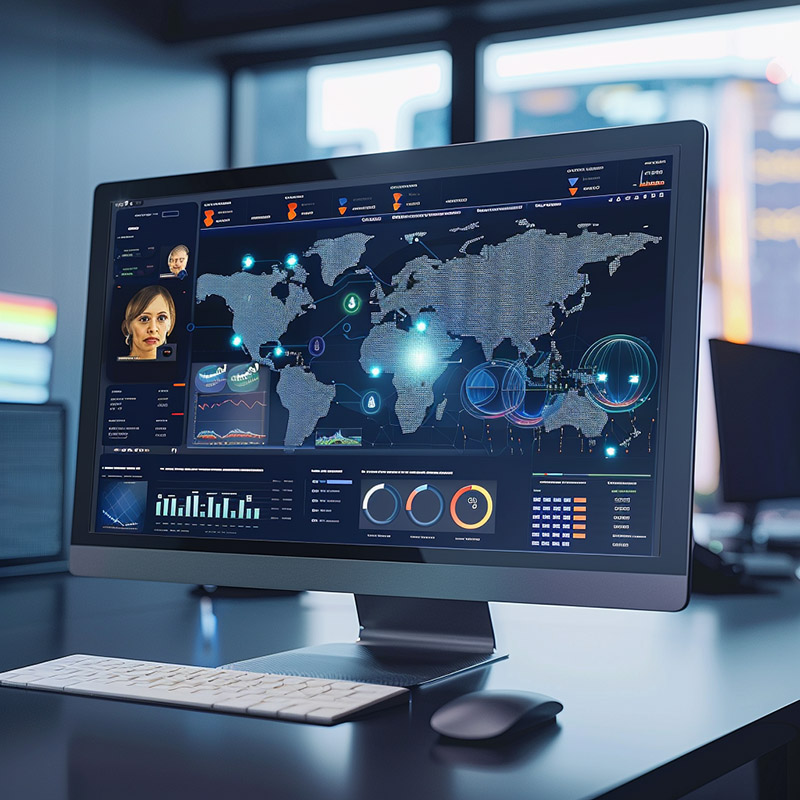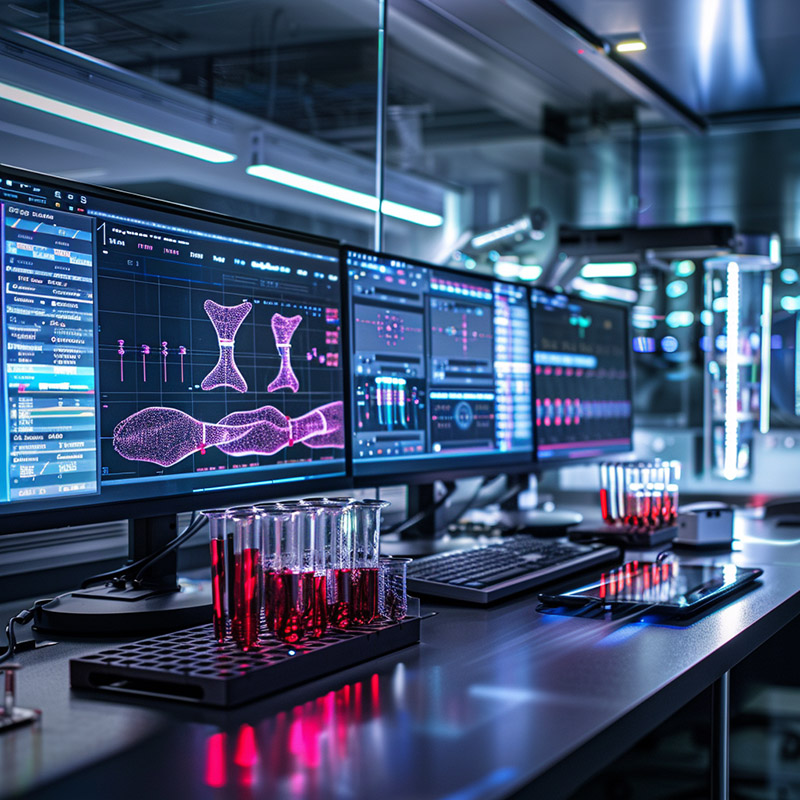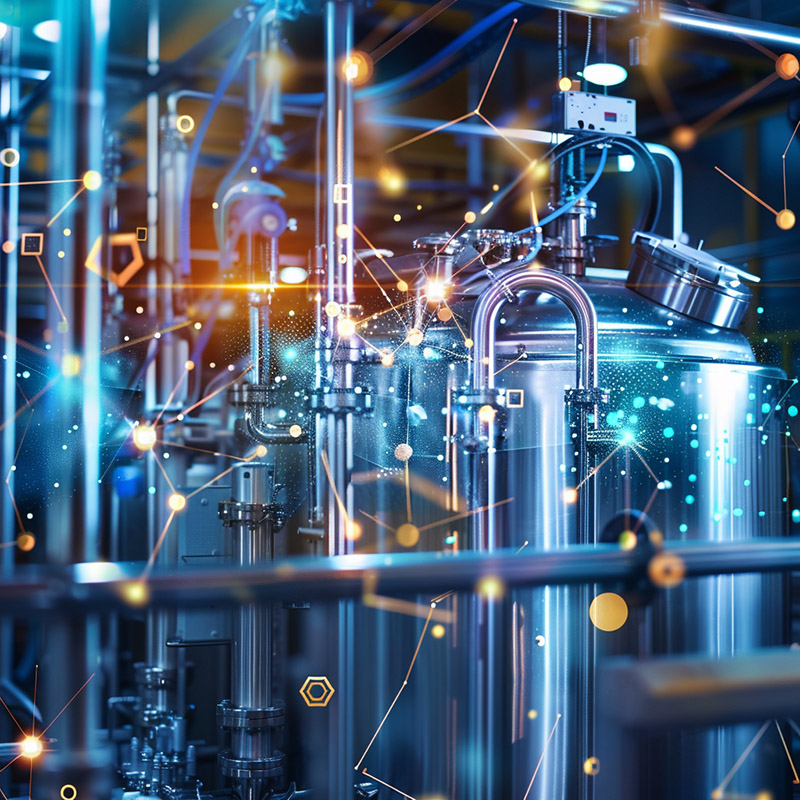1. Drug Discovery and Development
AI algorithms rapidly analyze vast datasets to identify potential drug candidates, predict their efficacy, and optimize molecular structures, significantly reducing the time and cost associated with traditional drug discovery processes.

AI revolutionizes drug discovery and development by significantly accelerating the identification of potential therapeutic compounds and streamlining the design process. Through analyzing vast datasets of chemical structures, biological data, and pharmacological effects, AI algorithms can predict the efficacy and safety profiles of new drug candidates, narrowing down the vast space of possibilities to those with the highest potential. This not only reduces the time and financial investment required to bring new treatments to market but also increases the success rate of discovering viable drugs, ultimately speeding up the availability of new medicines for patients.
2. Precision Medicine
By analyzing patient data and genetic information, AI can tailor medical treatments to individual patients, improving treatment outcomes by identifying the most effective therapies based on a person's unique genetic makeup.

In precision medicine, AI's ability to analyze and interpret complex genetic information and health data enables the tailoring of treatments to individual patients. By identifying genetic markers and correlating them with responses to various treatments, AI can predict which therapies will be most effective for specific patients, reducing trial and error in treatment selection. This personalized approach improves patient outcomes, minimizes side effects, and enhances the overall efficiency of medical care, marking a shift towards more customized healthcare solutions.
3. Genomic Sequencing and Analysis
AI enhances the speed and accuracy of genomic sequencing, interpreting vast amounts of genetic data to identify mutations and variations linked to diseases, facilitating faster diagnosis and the development of targeted therapies.

AI dramatically improves genomic sequencing and analysis by handling the immense volume of data generated in sequencing projects with unparalleled speed and accuracy. It can detect patterns, mutations, and genetic variants that may be associated with specific diseases, providing valuable insights for diagnosis and treatment planning. This capability is crucial for advancing our understanding of genetic diseases, enabling earlier detection, and facilitating the development of targeted therapies, thereby opening new avenues in medical research and patient care.
4. Protein Structure Prediction
AI models, such as AlphaFold, accurately predict the 3D structures of proteins based on their amino acid sequences, a crucial step in understanding disease mechanisms and designing effective drugs.

The prediction of protein structures using AI, as demonstrated by tools like AlphaFold, represents a significant breakthrough in biochemistry and drug design. Understanding the three-dimensional shape of proteins is essential for elucidating their functions and how they interact with potential drug molecules. AI's ability to accurately predict protein structures from their amino acid sequences saves years of experimental work, accelerating the development of drugs targeted at specific proteins and advancing our understanding of life's molecular mechanisms.
5. Clinical Trial Design and Patient Recruitment
AI optimizes clinical trial design by identifying the most suitable candidates for specific studies, improving trial efficiency, and increasing the likelihood of successful outcomes by ensuring the right fit between trial objectives and participant profiles.

AI transforms clinical trial design and patient recruitment by optimizing trial parameters and efficiently matching patients to studies. By analyzing patient data, including genetic information, health history, and demographic factors, AI algorithms can identify the most suitable candidates for specific trials, improving enrollment rates and the relevance of trial populations. This leads to more efficient trials, higher-quality data, and quicker paths to determining a treatment's efficacy and safety, ultimately benefiting the entire drug development process.
6. Medical Imaging Analysis
AI algorithms improve the analysis of medical images, such as X-rays and MRIs, detecting abnormalities with greater accuracy and speed than traditional methods, aiding in early diagnosis and treatment planning.

AI enhances medical imaging analysis by providing radiologists and other medical professionals with tools that can detect abnormalities with higher precision and at earlier stages than traditional methods. By training on vast datasets of imaging scans, AI models learn to identify signs of diseases such as cancer, neurological disorders, and cardiovascular conditions. This not only improves diagnostic accuracy but also significantly reduces the time needed for analysis, allowing for earlier intervention and better patient outcomes.
7. Synthetic Biology
AI aids in the design and engineering of biological systems and organisms, accelerating the development of new biofuels, sustainable materials, and innovative medical therapies by predicting how changes at the genetic level will affect outcomes.

In synthetic biology, AI aids in designing and engineering biological systems for various applications, from biofuel production to the creation of new therapeutic agents. By simulating genetic modifications and predicting their outcomes, AI enables scientists to prototype and test new organisms in a fraction of the time required for traditional methods. This accelerates the development of sustainable technologies and medical innovations, contributing to environmental sustainability and advancing healthcare.
8. Biomanufacturing Optimization
AI monitors and optimizes biomanufacturing processes, ensuring quality control, predicting maintenance needs, and improving yield, leading to more efficient production of biotech products.

AI's application in biomanufacturing optimization ensures more efficient production processes, from pharmaceuticals to biofuels. By monitoring production parameters in real time and predicting the impact of any changes on yield and quality, AI can guide adjustments to improve outcomes. This not only enhances product quality and consistency but also reduces waste and production costs, leading to more sustainable and economical manufacturing practices.
9. Regenerative Medicine
AI models simulate tissue growth and organ development, guiding stem cell research and the development of regenerative therapies, potentially leading to breakthroughs in healing injuries and treating degenerative diseases.

AI propels regenerative medicine forward by modeling and predicting the outcomes of stem cell therapies and tissue engineering. It can simulate how cells will differentiate and organize into tissues or organs, guiding the development of therapies for repairing or replacing damaged tissues. This capability accelerates the creation of regenerative treatments, offering new hope for conditions currently deemed untreatable and paving the way for innovations in medical care.
10. Epidemiology and Disease Prediction
AI analyzes data from a variety of sources to track disease outbreaks in real-time, predict the spread of infectious diseases, and inform public health responses, improving the effectiveness of disease prevention and control measures.

AI significantly benefits epidemiology and disease prediction by analyzing data from a wide range of sources to identify patterns and predict outbreaks of infectious diseases. It can track the spread of pathogens in real-time, model potential scenarios, and inform public health strategies to prevent and contain diseases. This leads to more effective disease control measures, improved public health responses, and a better understanding of disease dynamics, ultimately saving lives and reducing the impact of infectious diseases on communities worldwide.
One of the key advantages of AI in epidemiology is its ability to process vast amounts of complex, heterogeneous data from multiple sources, such as electronic health records, social media, environmental sensors, and mobile devices. By integrating and analyzing this data in real-time, AI algorithms can detect subtle patterns and anomalies that may indicate the early stages of an outbreak, allowing public health officials to respond more quickly and effectively.
For example, AI-powered systems can monitor social media posts and online search queries for mentions of specific symptoms or illnesses, providing an early warning system for potential disease outbreaks. Similarly, AI can analyze data from wearable devices and mobile apps to track the movement and health status of individuals, helping to identify potential disease clusters and transmission hotspots.
AI can also be used to develop more accurate and sophisticated models of disease spread, taking into account a wide range of variables such as population density, mobility patterns, climate conditions, and social behaviors. These models can simulate the potential impact of different intervention strategies, such as vaccination campaigns, quarantine measures, or public health messaging, allowing decision-makers to optimize their response based on the best available evidence.
Moreover, AI can help to identify high-risk individuals and populations who may be particularly vulnerable to certain diseases, based on factors such as age, underlying health conditions, or socioeconomic status. This can enable more targeted and effective public health interventions, such as prioritizing vaccinations for those at greatest risk or providing additional support and resources to communities with limited access to healthcare.
AI-powered tools can also assist in the rapid development and deployment of new diagnostic tests, treatments, and vaccines for emerging infectious diseases. By analyzing large datasets of genetic and molecular information, AI algorithms can identify potential drug targets, predict the efficacy and safety of different compounds, and accelerate the discovery and testing of new interventions.
The potential for AI to transform epidemiology and disease prediction is significant. By leveraging the power of data and advanced analytics, AI can help us to better understand the complex dynamics of infectious diseases, develop more effective interventions, and ultimately save lives. As we continue to face the ongoing threat of pandemics and emerging pathogens, it is essential that we harness the full potential of AI and other cutting-edge technologies to protect public health and build more resilient, responsive, and equitable healthcare systems.